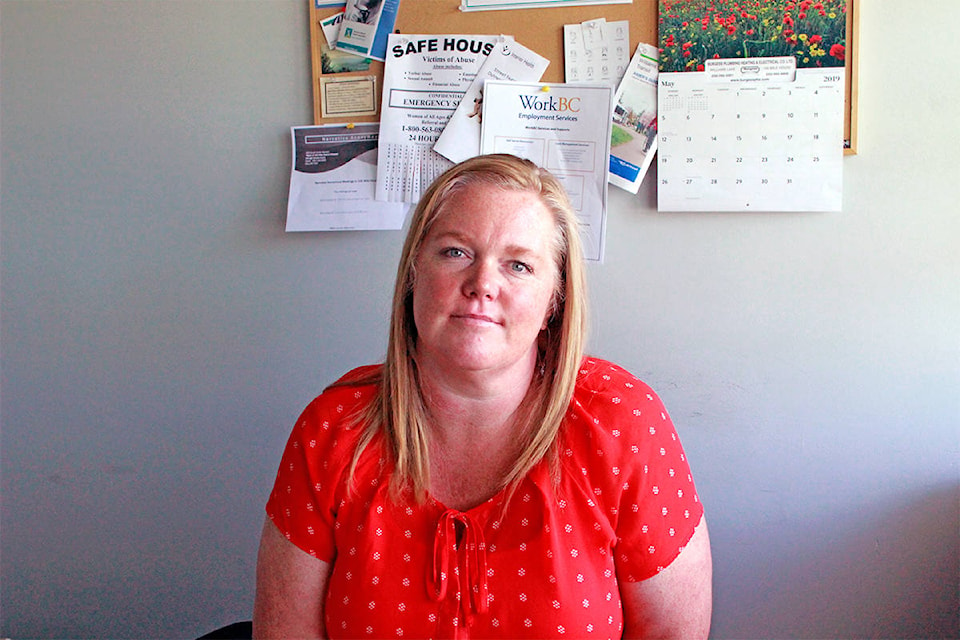There is a lack of housing in 100 Mile House and finding a place to live is not becoming any easier.
“It is an issue and it has been getting worse,” said Marine Jensen, who is the homeless outreach coordinator for the Canadian Mental Health Association (CMHA). “Everybody deserves housing and everybody deserves to have a safe place to stay and that’s not happening.”
Jensen helps those who are homeless or who might be at risk of homelessness. Currently, the CMHA is seeking out tents and sleeping bags for those needing a place to sleep.
“A person could be at risk because of poor or unsafe housing, lack of income, higher than expected bills or transportation - all in which are pretty big issues around here,” Jensen said.
When asked about the number of homeless people in the South Cariboo, Jensen didn’t have an exact number. She believes most of the homeless population tends to couch surf while trying to figure out their next move.
“They are not adequately housed or housed safely, even permanently housed,” Jensen said. “We don’t have a lot of people on the streets, they tend to find places to go, but those aren’t usually safe or good circumstances.”
The association runs the Cariboo Trails Terrace, a B.C. subsidized housing complex. In total, there are 25 units, consisting of one, two, three and four bedrooms. A person’s rent is determined on their income. Jensen said it could be years before a unit becomes available.
Related: 100 Mile House had least affordable housing in Northern B.C. last year
“We need more housing and housing that is more affordable,” Jensen said. “People will come in and apply while not understanding that it is not a solution and more of a long-term thing. I don’t know what rental rates are currently, but I know that people are looking for months before they can find something. If you look at Kijiji or the Facebook groups, you will find two people who are advertising rental spaces and six people inquiring.”
Jensen pointed out that in smaller communities, the homeless population isn’t as visible as it is in larger urban areas.
“There are homeless people and they are here,” Jensen said.
The tents and sleeping bags act as a band-aid to a person’s current situation. If a person has nowhere to go, Jensen can supply her client(s) with a tent and sleeping bag. They sleep where they can.
“If people in town are saying we don’t want homeless people here, they already are. When we are sending them somewhere else, we are just sending them off for someone else to take care of them. It’s difficult,” Jensen said. “I don’t think we have any interest in having a shelter, I don’t think that is ever going to happen. While we had the bus service, I was able to ship people off to places where shelters are available.”
The closest housing program for people who are homeless or at-risk is the Jubilee Place in Williams Lake. There is also the Cariboo Friendship Society (also in Williams Lake), which is a shelter for the homeless.
Related: South Cariboo income reflects senior population
“There are small communities that have these support systems,” Jensen said. “There are other places that have more things going on for people in need. I don’t think that by pretending this population doesn’t exist that it will go away. I don’t think by providing more supports that it will draw people into the community that wouldn’t have been there already.”
Jensen has noticed a recent increase in seniors not having a place to go.
“I see seniors who have lived in the same rental accommodation for 20 years and are now being evicted because it’s being sold or [they’re] trying to live on a pension, but rent has gone from $600 to $1000 and now they don’t have enough money,” Jensen said. “They have nowhere to go - it’s crummy.”
Jensen said she has seen rent prices increase from $50 to $100 between tenants. People are stuck renting a place they can hardly afford but they need a place to live.
“We aren’t going to have people flocking in for housing,” Jensen said. “It’s understanding that just because we might provide housing for people that we aren’t going to degrade the town or bring it down. They (homeless or at-risk) are already here or have gone somewhere else.”
newsroom@100milefreepress.net
Like us on Facebook and follow us on Twitter.
